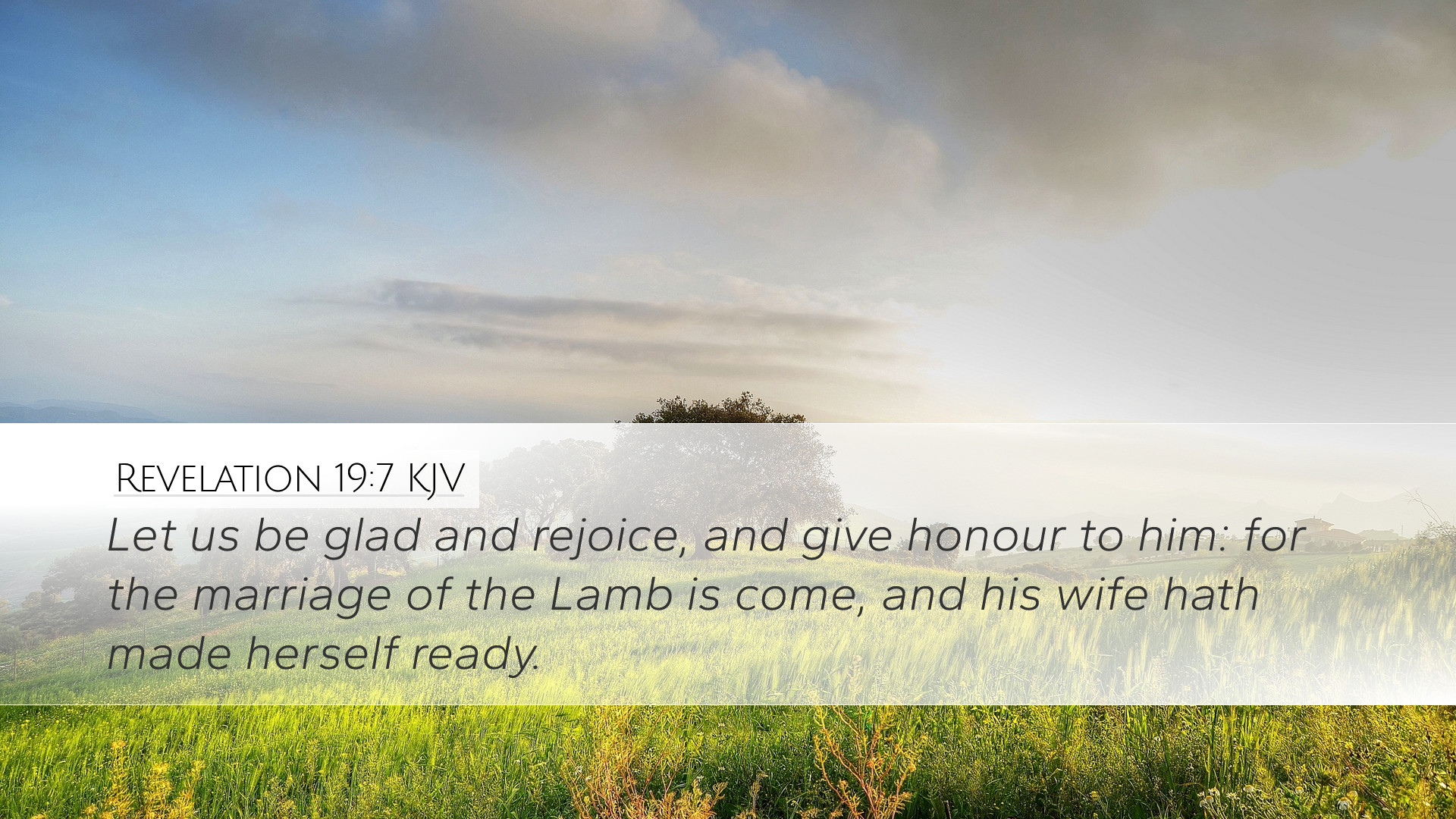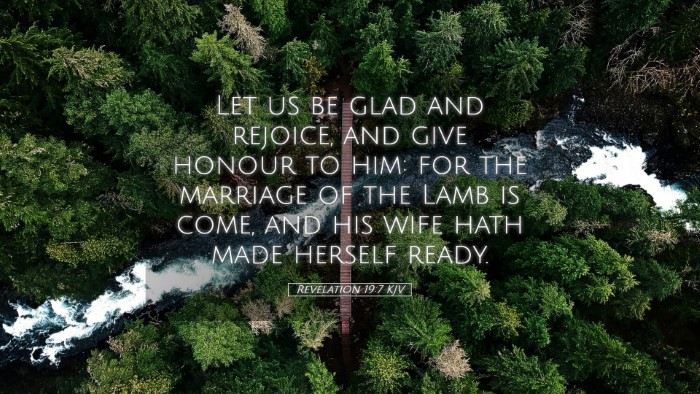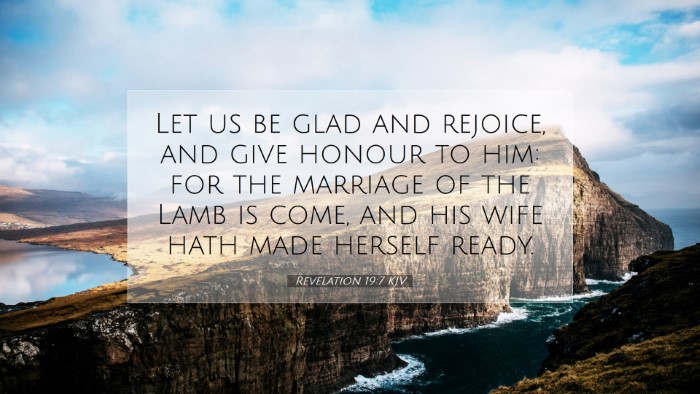Commentary on Revelation 19:7
Selected Verse: "Let us be glad and rejoice, and give honor to him: for the marriage of the Lamb is come, and his wife hath made herself ready."
Introduction
The verse under consideration, Revelation 19:7, speaks about the joyous announcement of the marriage of the Lamb—an essential event that encapsulates the culmination of divine redemption and the Church's relationship with Christ. This commentary synthesizes insights from various public domain sources, providing a comprehensive examination of its implications for believers and the significance of the imagery used.
Context of Revelation 19
The book of Revelation is rich in symbolism and prophetic imagery, portraying the victory of Christ and the establishment of God's eternal kingdom. The chapter transitions from the judgments executed upon Babylon, the great city, to the heavenly celebration of God’s ultimate triumph. Here, the wedding of the Lamb signifies the mystical union between Christ and the Church, fulfilling the promise of redemption.
Detailed Commentary
1. The Invitation to Rejoice
Matthew Henry remarks that the exhortation to "be glad and rejoice" reflects the natural response of the redeemed to the fulfillment of God's promises. The Church, as the bride, is invited to celebrate the imminent union with her Husband, characterized by joy and gratitude.
- Joy as a Theme: Joy is a recurring theme throughout Scripture, especially in connection with salvation and divine intervention. The wedding feast symbolizes the ultimate restoration and celebration.
- Corporate Rejoicing: The call to collectively rejoice indicates the communal aspect of faith, where the entire Church participates in the joy of Christ’s victory and the promise of eternal life.
2. The Marriage of the Lamb
Albert Barnes explains that the "marriage of the Lamb" presents an intimate and sacred relationship between Christ and the Church. This metaphor emphasizes love, commitment, and the covenantal nature of salvation.
- Christ as the Bridegroom: The New Testament often portrays Christ as the Bridegroom, reflecting the deep love and sacrificial nature of His relationship with the Church (Ephesians 5:25-32).
- The Bride's Preparation: The readiness of the bride is a recurring motif, denoting the Church's call to holiness and purification in anticipation of meeting Christ.
3. The Wife's Preparation
Adam Clarke draws attention to the phrase "his wife hath made herself ready." This implies an active role of the Church in preparing for the marriage supper, highlighting the necessity of sanctification and spiritual readiness among believers.
- Sanctification Process: The Church must engage in spiritual disciplines—prayer, study of the Word, and acts of service—to prepare herself. This process of sanctification is essential as believers await Christ's return.
- Glorious Clothing: The next verses elaborate on the "fine linen" that the bride wears, which symbolizes the righteous acts of the saints (Revelation 19:8). Such imagery underscores the importance of holy living.
Theological Implications
This verse and its surrounding context underscore significant theological concepts:
- The Eschatological Hope: Revelation 19:7 reinforces the Church's hope in future restoration and victory, assuring believers that their struggles are not in vain.
- The Unity of Christ and the Church: The marriage symbolizes not just a future event but an existing relationship that demands faithfulness and purity from the Church.
- Call to Vigilance: Believers are admonished to be watchful and prepared, as the culmination of history will reveal the bridegroom's return.
Conclusion
The imagery in Revelation 19:7 carries profound meaning for the Church today. It calls for a response of joy, an acknowledgment of Christ's lordship, and an active commitment to spiritual readiness. This passage serves as a reminder of the intimate relationship Christ desires with His Church and the celebration that awaits us—a union that must ignite our hearts to live out the righteous life to which we are called.
In summary, the insights from Matthew Henry, Albert Barnes, and Adam Clarke combine to present a robust theological understanding of this pivotal text, offering guidance and encouragement to pastors, students, and scholars as they contemplate the profound implications of being part of the Bride of Christ.


